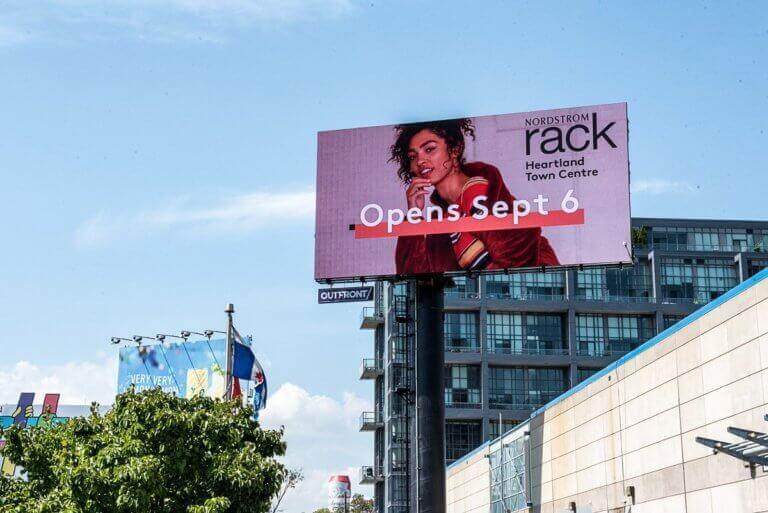
Companies with a strong online persona are understanding that the Internet just isn’t enough to get the reach they want. In cases where the market is too saturated, online companies are finding it difficult to broadcast their advertising efforts on webpages uneasy to determine ROI and consumer behavior. Even large tech companies, like Google and Facebook, are using outdoor advertising to sustain their marketing and social influence. Media buyers rave about outdoor advertising because it’s unmissable and leads people to discover other advertising channels, which we’ll talk about later. Online advertising just doesn’t hold a candle to the impact of a stellar OOH (out-of-home) advertisement. We will examine the benefits of outdoor advertising for online based companies and how it’s measurable, as well as look as how tech giants are incorporating OOH in their marketing plan, and see how digital OOH is making a splash in the vast, multifaceted advertising ocean.
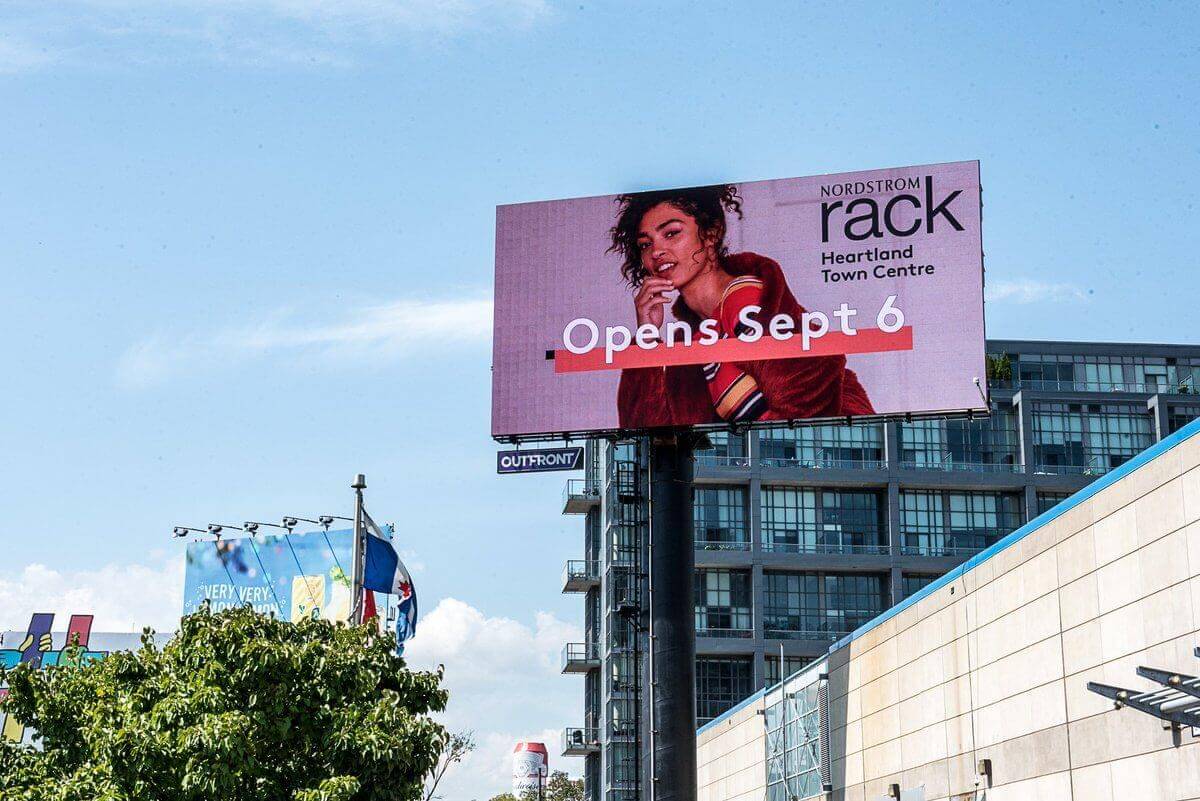
The Strengths of OOH for Online Companies
Rather than strictly focusing on advertising on social media, there are a number of ways that outdoor advertising can have a better impact on consumers developing a perception of your brand.
For one, OOH advertisements live in the real world. This means that they’re immune to any fraud that exists in online platforms. And bots, fake consumers, are extinct in reality. The stand-alone overarching billboard will prevail over the pesky bot-infested Internet banner ad simply because of its inescapable presence.
Outdoor advertising is high-frequency, and has the power to reach about 90% of the population. The sheer exposure of outdoor advertising really makes it the powerful tool it is, as anyone breathing fresh air can fall victim to an OOH impression. Now, it may not lift you up, spin you around, and guide you back to land because of its superhuman powers, but an OOH ad has the ability to make you stop, lock eyes, and take a few seconds with it, rather than just scroll past.
Not everyone is online, so the OOH can make an impression on 80 year old Dolores in your community that regularly takes short walks around the neighborhood. The chances that everyone will see a local billboard, or other OOH display, by chance, when performing their daily activities, is very high.
Outdoor advertising is shareable on social media. The two platforms meet up! An impressionable OOH ad can easily be photographed by a viewer, then posted on an online platform. The advertising lives on. From this, outdoor advertising drives a large number of online searches. Someone loving an OOH will look up more information about it on the internet. OOH curiosity fuels online action.
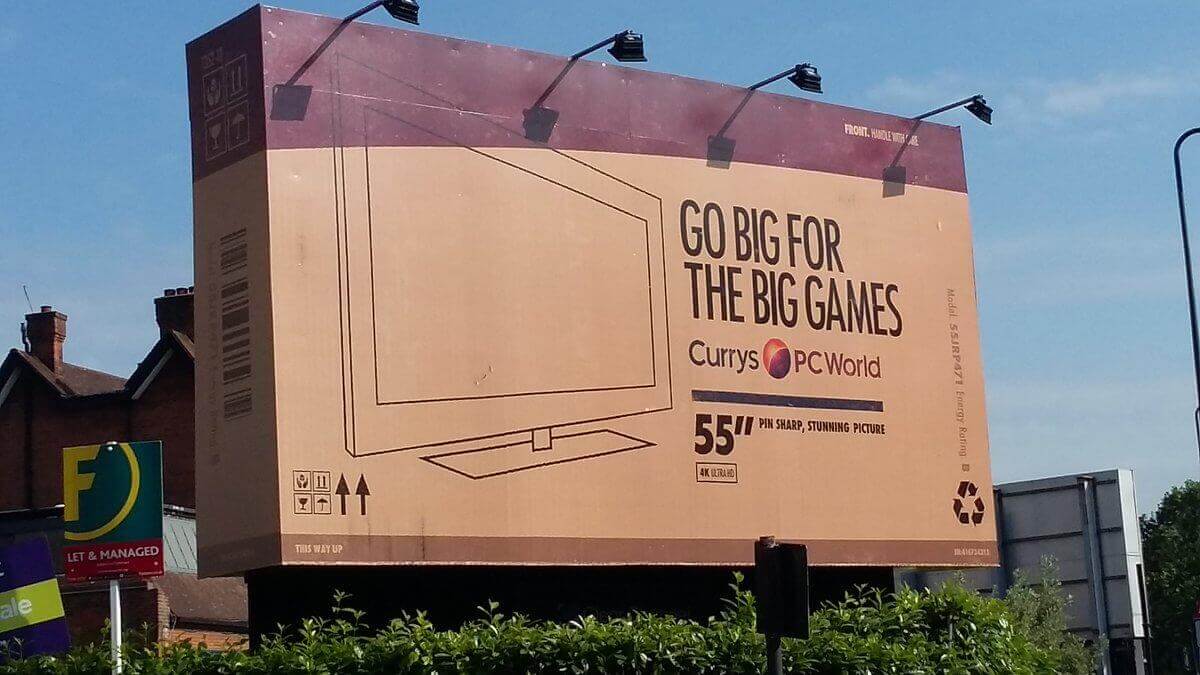
How Outdoor Advertising is Measurable
Point form, this is how you can go about measuring consumer impact with OOH:
– shortcodes, which are small, engaging call-to-actions great for transit and pedestrian-focused campaigns, measured by tracking the shortcode usage
– Google AdWords, which will measure the cost per click and click-through rates by area, with the result of quantifying the performance of OOH in an online sphere
– Google Analytics, which measures the lift in site traffic, and has proven to increase site traffic by more than 40% vs. controls (O’Connor 2018)
– geo-fenced mobile ads, which measure engagement rate by area and create ads on smartphones that mimic the OOH message
– geographic surveys based on ZIP codes, which tracks brand awareness and classification of channels in the OOH advertising locations
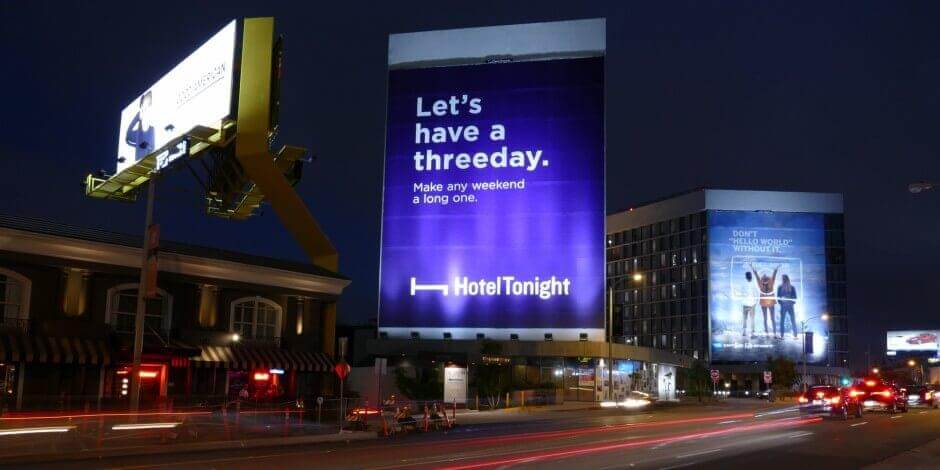
Tech Giants Love Outdoor Advertising
According to the Outdoor Advertising Association of America, Apple, Google, and Amazon ranked among the top six spenders on OOH advertising in 2017, with Netflix making it in the top 15 (Mutua 2018). Just last year, Facebook ran an outdoor advertising campaign to promote its new safety and privacy approach for users because they saw that it’s the only traditional channel of advertising expected to grow- in 2018, precisely, 2 percent to $8 billion (Mutua 2018). Google is also jumping on the outdoor bandwagon by introducing DoubleClick ad technology in billboards that will allow advertisers to decide the creative message they want to be displayed. After three years of testing programmatic ad technology on billboards, Google is confident in targeting ads to commuters or pedestrians that fall under the location the billboard is placed in.
Geo-targeting is a tactic that tech giants take advantage of, because they’re able to reach out to just about everyone with messages catering to the individual lifestyle. It’s a legal, pervasive way to get in touch with consumers at every travel stage of their day. It’s no wonder large companies are using OOH to better track consumer behavior, and using billboards to supplement their findings. The gap between digital advertising and outdoor advertising is beginning to close, and tech giants are placing funding in ideas that help the two mediums merge seamlessly.
Digital OOH- The Next Wave
With the magic powers to change screens every 10 seconds or so, the enormous size and vibrant colors, and the focus on entertaining the masses, digital out-of-home (DOOH) advertisements are rapidly growing in billboard friendly sectors. Media buyers see DOOH as a profitable use of space, where it’s growing 16% year after year, entirely carrying the credit of the OOH category of advertising (Côté 2018). Research from Ocean NeuroScience discovered that “consumers are 48% more likely to click on a mobile ad after being exposed to the same ad on an OOH first.” (Côté, 2018). OOH advertising has an impressive resume as it is, but with more digital programmatic technology the entire category is being reinvented. Dynamic content delivery like current weather reports, traffic updates, sports news, and more can neatly fit in a DOOH screen. Now, useful information is distributed in real-time to people in a billboard format which, ten years ago, wasn’t made possible.
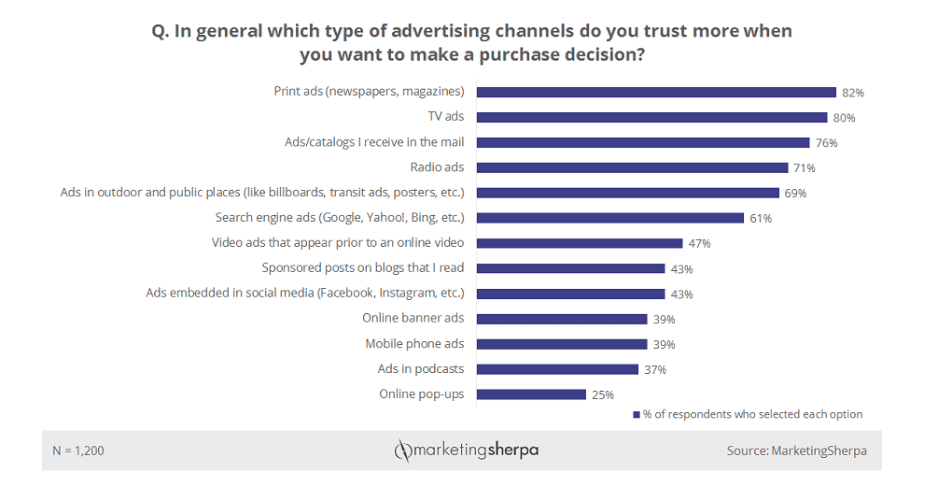
This survey published by Marketing Sherpa in 2017 analyzes consumer data related to trustworthy advertising channels. Note that outdoor advertising is seen as more trustworthy than all digital advertising forms.
From relishing in the benefits of outdoor advertising, to deciphering its measurements, and seeing how tech giants make use of it, as well as touching briefly on DOOH, it still stands that online based companies should strive to advertise with the booming business of OOH.
References:
Côté, Rob (9 November 2018). Everything You Need To Know About Out-of-Home Advertising. Broadsign. Retrieved from: https://broadsign.com/blog/out-of-home-advertising/
Mutua, David Caleb (6 August 2018). Facebook Pushes Online Ads, Then Spends Its Cash on Billboards. Bloomberg, Technology column. Retrieved from: https://www.bloomberg.com/news/articles/2018-08-06/big-tech-is-spending-big-in-a-decidedly-old-school-way
O’Connor, Matt (14 March 2018). Relying on Social Marketing? Give Outdoor Advertising Another Look. Adweek. Retrieved from: https://www.adweek.com/digital/relying-on-social-marketing-give-outdoor-advertising-another-look/


